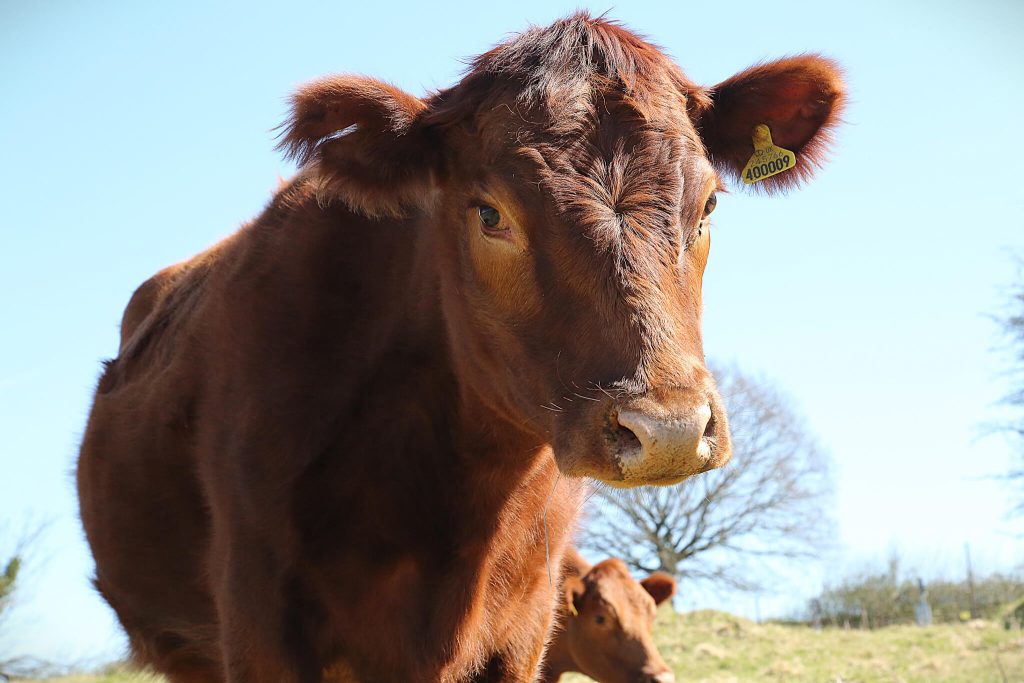
In the rolling hills of Brill Common, a unique form of land management is quietly preserving one of the UK’s most valuable natural habitats described as a unimproved, species-rich grassland. At the heart of this conservation grazing effort is not a large environmental NGO or a fleet of machines, but a local community and a herd of small, hardy cattle.
This is the story of how conservation grazing, and a dedicated group of volunteers, are transforming the land and reviving its biodiversity.
A common with purpose
Once a neglected piece of land crisscrossed by just two main footpaths, Brill Common is now a flourishing natural space that people can explore more freely. The secret to its revival lies in its traditional conservation grazing management. This approach has been carefully used to manage grazing animals to maintain and restore natural habitats.
Pat Stone, Herd Manager of the Brill Village Community Herd, explains, “The cow’s purpose in life is to maintain the common and preserve it.”
Why conservation grazing matters for biodiversity
The core goal of conservation grazing is to improve and protect biodiversity. Brill Common is now recognised as unimproved grassland, a habitat type that’s increasingly rare in Britain. It's also classified as species-rich grassland, home to a wide variety of native plants.
According to Pat, the reintroduction of grazing animals has had a transformative effect: “They’ve opened up the grassland so all of the seeds that have been there for many years can come through and flower again.” Thanks to careful grazing, seeds long dormant in the soil are now germinating, and once-forgotten wildflowers are making a return, some for the first time in decades.

A community-driven approach
Where other villages might join forces to purchase a local pub or post office, the community in Brill chose a different route by coming together to preserve their common land. Through a collaborative effort, they established a herd of nine Dexter cattle to graze the common with a volunteer network to support it.
The initiative now boasts around 50 active volunteers, working in two main roles:
- Volunteer lookers are responsible for basic welfare checks. They ensure the cattle are present and healthy, count them (as long as you can count to nine, you’re qualified!), check the flashing lights that indicate electric fencing is functioning, and confirm there’s water in the troughs.
- Volunteer movers take on a more hands-on role. They manage the electric fencing that divides the common into different grazing paddocks. As the cattle move from one paddock to another, movers dismantle and re-erect fencing accordingly. This method gives some areas time to rest and regenerate while others are grazed, striking a balance that enhances biodiversity.
Why Dexters are the ideal conservation grazers
Choosing the right breed for conservation grazing is vital. In Brill, the terrain is uneven and includes steep banks. That’s where Dexter cattle come in. As a small, heritage breed, they are well suited to hilly landscapes and are much less intimidating to the public compared to larger cattle breeds.
“The common has a lot of people walking about,” says Pat, “and if you had something like a Belgian Blue… they’re a lot more intimidating than a Dexter.” In fact, when the project began, Dexters were considered a rare breed, making their inclusion not just practical but also beneficial for breed conservation.
Their gentle nature also makes them more manageable for the community volunteers, many of whom aren’t from farming backgrounds but feel confident handling smaller animals.
A model for conservation and community
Brill Common stands as a shining example of how conservation and community action can go hand-in-hand. The success of this project proves that managing land for nature doesn’t always require large-scale funding or professional expertise, just a group of committed individuals, a thoughtful grazing plan, and the right animals for the job.
As more communities look for sustainable ways to care for local green spaces, conservation grazing offers a practical and powerful model for biodiversity restoration.
